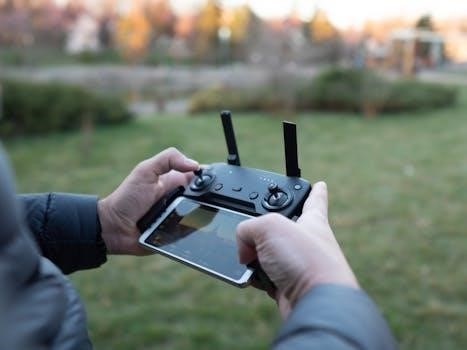Freestyle Lite User Manual⁚ A Comprehensive Guide
Welcome to the comprehensive guide for the FreeStyle Lite blood glucose monitoring system․ This manual provides essential information for effectively managing your diabetes on-the-go․ Learn about the key features, setup, testing procedures, troubleshooting, and care instructions․
The FreeStyle Lite blood glucose meter is designed for convenient and discreet everyday testing․ It’s a compact device intended to help individuals manage their diabetes effectively․ This meter requires no coding, simplifying the testing process․ With a tiny blood sample, you can obtain accurate results quickly, aiding in informed decision-making regarding diet, exercise, and medication․
This system is available at most pharmacies․ However, remember that this guide is not intended as medical advice․ Always refer to the package insert or label accompanying your product for detailed instructions․ The FreeStyle Lite system boasts user-friendliness, making it accessible to a wide range of users․
The FreeStyle Lite meter provides a discreet way to monitor blood glucose levels․ Its portability enables you to easily manage your diabetes wherever you are․ Whether you’re at home, work, or traveling, the FreeStyle Lite meter offers a reliable solution for staying on top of your health․ This meter is a valuable tool in helping you lead a healthier and more informed life․
Key Features of the Freestyle Lite System
The FreeStyle Lite system offers several key features designed to enhance the user experience and improve diabetes management․ One notable feature is its lack of interference from common substances like acetaminophen, which can affect the accuracy of other glucose monitoring systems․ This ensures reliable results, even when taking over-the-counter pain relievers․ The system also boasts impressive data storage capabilities, holding up to 400 readings․ This allows for easy tracking of blood glucose levels over time, facilitating better pattern recognition and informed adjustments to treatment plans․

Another important feature is the presence of high and low glucose level alarms․ These built-in alarms alert you when your blood glucose levels are outside of the target range, enabling prompt action to prevent complications․ The FreeStyle Lite system is designed for ease of use, with straightforward instructions and a user-friendly interface․ Its small size and discreet design make it convenient for on-the-go testing, ensuring that you can manage your diabetes effectively, no matter where you are․
Setting Up the Freestyle Lite Meter
Before using your FreeStyle Lite meter for the first time, it is crucial to properly set it up․ Begin by inserting the batteries into the meter, following the instructions provided in the user manual․ Once the meter powers on, you will need to set the date and time․ This ensures that your blood glucose readings are accurately recorded for tracking purposes․ Navigate through the meter’s menu using the buttons, adjusting the date, month, year, hour, and minute accordingly․
Next, familiarize yourself with the meter’s display and functions․ The display shows your blood glucose readings, as well as any error messages or alerts․ Take the time to understand the different symbols and icons on the screen․ Some FreeStyle Lite meters may require coding, while others are no-coding models․ If your meter requires coding, ensure that you enter the correct code number, which can be found on the test strip vial․ This step is essential for accurate results․ Finally, review the user manual for detailed instructions on performing a blood glucose test and using the meter’s other features․
Performing a Blood Glucose Test
To accurately monitor your blood glucose levels using the FreeStyle Lite meter, follow these steps carefully․ First, wash your hands thoroughly with soap and water, then dry them completely․ Insert a new FreeStyle Lite test strip into the meter’s test strip port․ The meter will automatically turn on and display a flashing blood drop symbol, indicating that it is ready for testing․ Next, use the lancing device to prick your finger to obtain a small drop of blood․ Refer to the lancing device insert for detailed instructions on how to use it․
Gently apply the blood drop to the designated area on the test strip․ Ensure that the blood sample is sufficient for the meter to provide an accurate reading; The FreeStyle Lite meter requires only a tiny blood sample․ Within seconds, the meter will display your blood glucose level․ Record the reading in your logbook or diabetes management app․ Properly dispose of the used test strip and lancet in a sharps container․ If you encounter any issues or error messages during the testing process, consult the troubleshooting section of the user manual․
Understanding Test Results and Alarms
The FreeStyle Lite meter provides you with immediate feedback on your blood glucose levels, but it’s crucial to understand what those results mean․ Your healthcare provider will have established target ranges for your blood glucose, and it’s important to keep your levels within those ranges as much as possible․ Readings outside the target range may indicate hyperglycemia (high blood sugar) or hypoglycemia (low blood sugar), each requiring specific actions outlined by your doctor․
The FreeStyle Lite meter also features built-in alarms to alert you when your blood glucose levels are too high or too low․ These alarms can be customized to your individual needs and target ranges․ When an alarm sounds, take immediate action as directed by your healthcare provider․ This may involve taking medication, eating a snack, or seeking medical attention․ Regular monitoring and understanding your test results, along with prompt responses to alarms, are key to effective diabetes management and avoiding complications․
Using Control Solution for Quality Checks

Regularly performing quality control checks with a control solution is essential to ensure your FreeStyle Lite meter and test strips are working correctly and providing accurate results․ Control solutions contain a known amount of glucose, and when tested, the meter should display a result within the acceptable range printed on the test strip vial․ This verifies the accuracy and reliability of your testing system․

To perform a control solution test, first, ensure you have a control solution specifically designed for your FreeStyle Lite meter․ Apply a drop of control solution to the test strip, following the instructions provided on the control solution’s packaging․ Compare the result displayed on the meter to the acceptable range printed on the test strip vial․ If the result falls within the range, your system is working correctly․ If not, consult the troubleshooting section of this manual or contact customer support for assistance․
Data Storage and Tracking
The FreeStyle Lite meter is equipped with a built-in memory that stores up to 400 blood glucose test results․ This feature allows you to track your blood glucose levels over time and identify patterns or trends that can help you better manage your diabetes․ Regularly reviewing your stored data with your healthcare provider can provide valuable insights into your glucose control and inform treatment decisions․
To access the stored data on your FreeStyle Lite meter, navigate to the memory or history function in the meter’s menu․ You can then scroll through the stored readings, which are typically displayed with the date and time of the test․ Some meters may also offer the option to download the data to a computer or smartphone app for more detailed analysis and reporting․ Consult the software user guide for specific instructions on data downloading and analysis․

Troubleshooting Common Issues
Like any electronic device, the FreeStyle Lite meter may occasionally encounter issues․ One common problem is receiving an error message․ Consult the user manual for a list of error codes and their corresponding solutions․ Ensure the test strip is properly inserted and that you are using FreeStyle Lite test strips․ Also check the expiration date of the test strips․
If the meter displays a “Lo” or “Hi” reading, your blood glucose level may be outside the meter’s measuring range․ Retest and consult your healthcare professional if the issue persists․ If the meter doesn’t turn on, check the batteries and replace them if necessary․ Make sure to follow the correct polarity when installing new batteries․
Inaccurate readings can also occur․ Ensure the meter is clean, and the control solution test is within the acceptable range․ If problems continue, contact customer support․
Care and Maintenance of the Meter
Proper care and maintenance of your FreeStyle Lite meter are essential for accurate and reliable readings․ Regularly clean the meter’s exterior with a soft, damp cloth․ Avoid using harsh chemicals or immersing the meter in water․ Store the meter in a cool, dry place, away from extreme temperatures and humidity, and direct sunlight․ Do not store it in the bathroom․
Handle the test strips with clean, dry hands and always keep them in their original container with the lid tightly closed․ Check the expiration date before each use․ Keep the lancing device clean and replace the lancets after each test to prevent infection․ Do not share your lancing device with anyone else․
Replace the meter every 3 to 5 years to take advantage of the latest technologies․ Also remember to perform quality control checks using control solution regularly․
Where to Purchase Supplies and Seek Support
You can purchase FreeStyle Lite test strips, control solutions, and lancets at most pharmacies where diabetes products are sold․ Online retailers, such as Amazon and Advanced Diabetes Supply, also offer a wide selection of supplies․ Check with your healthcare provider or insurance company for preferred suppliers and potential discounts․
For technical support and assistance with your FreeStyle Lite meter, contact Abbott Diabetes Care customer service․ Their website provides helpful resources, including FAQs and troubleshooting guides․ You can also find instructional videos on YouTube that demonstrate how to set up and use the meter․ If you have any medical concerns or require assistance with interpreting your blood glucose readings, consult your healthcare professional․
Remember, the information provided in this manual is not a substitute for professional medical advice․ Always follow the instructions provided by your healthcare team․
